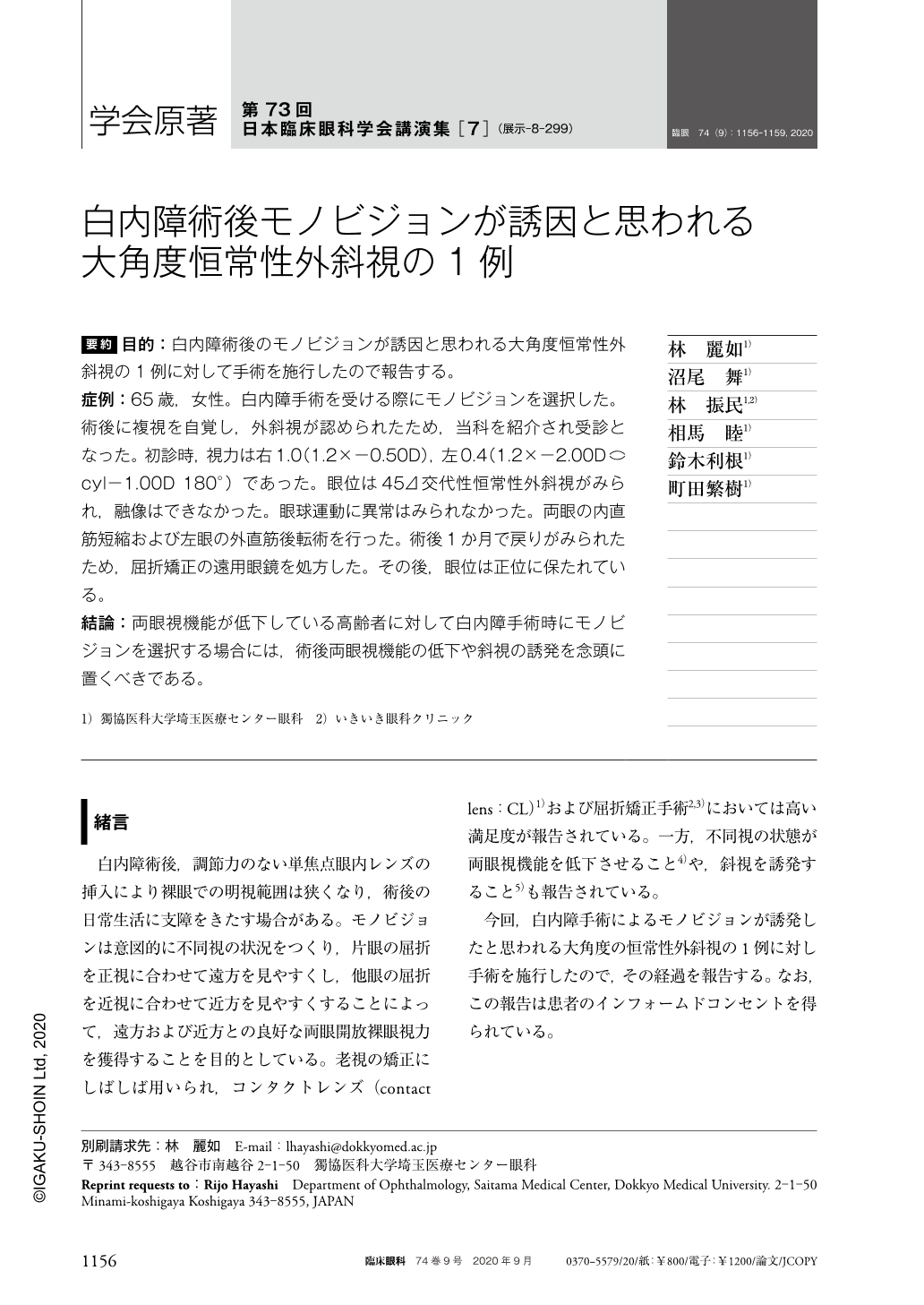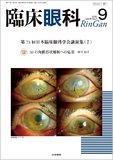Japanese
English
- 有料閲覧
- Abstract 文献概要
- 1ページ目 Look Inside
- 参考文献 Reference
要約 目的:白内障術後のモノビジョンが誘因と思われる大角度恒常性外斜視の1例に対して手術を施行したので報告する。
症例:65歳,女性。白内障手術を受ける際にモノビジョンを選択した。術後に複視を自覚し,外斜視が認められたため,当科を紹介され受診となった。初診時,視力は右1.0(1.2×−0.50D),左0.4(1.2×−2.00D()cyl−1.00D 180°)であった。眼位は45Δ交代性恒常性外斜視がみられ,融像はできなかった。眼球運動に異常はみられなかった。両眼の内直筋短縮および左眼の外直筋後転術を行った。術後1か月で戻りがみられたため,屈折矯正の遠用眼鏡を処方した。その後,眼位は正位に保たれている。
結論:両眼視機能が低下している高齢者に対して白内障手術時にモノビジョンを選択する場合には,術後両眼視機能の低下や斜視の誘発を念頭に置くべきである。
Abstract Purpose:To report a patient who suffered from a large-angle exotropia after cataract surgery with monovision.
Case:A 65-year-old female who complaining of diplopia after cataract surgery with monovision. She was referred to our department for treatment of a large-angle exotropia. At the initial visit, her visual acuities were OD:1.0(1.2×−0.50D);OS:0.4(1.2×−2.00D()cyl−1.00D 180°), and 45Δ of exotropia was noticed. As there were no abnormalities in extraocular muscle movement, recession of lateral recti and resection of medial recti of both eyes were performed. Spectacles for refraction errors were prescribed as the misalignment reoccurred one month after surgery. Thereafter, the eye position was kept in orthophoria.
Conclusion:Deterioration of binocular visual function in elderly patients may be one of the risk factors for inducing strabismus after cataract surgery with monovision.

Copyright © 2020, Igaku-Shoin Ltd. All rights reserved.


